Women get the short end of the stick when it comes to chronic pain.
If you’re a woman, you’re more likely to suffer headaches and migraines, neck pain, pain in your face and jaw, and yes, lower back pain. The list goes on and on…
Lower back pain is a very common complaint. And women are more likely to suffer lower back pain problems than men.
This article covers common causes of lower back and pelvic pain and women, along with some treatment options.
Article quick links:
- Indications of serious medical conditions
- Common causes of lower back and pelvic pain
- 4 simple steps for natural pain relief
Often, women’s lower back and pelvic pain go hand-in-hand.
For instance, if you strain a muscle in your back, the pain can radiate throughout your pelvic area and into your lower abdomen. And it works the other way around, too. Pain that begins in the pelvis can radiate throughout the lower back.
Pelvic pain (as well as back pain) can range from mild to severe and may manifest in dull and achy sensations or sharp pain.
Indications of serious medical conditions
Sometimes, pelvic pain can indicate a medical condition you might want to have checked out. Some of these include:
Ovarian and uterine disorders, such as ovarian cysts or uterine fibroids.
Sexually transmitted diseases, such as chlamydia or gonorrhea. (You may notice an unusual vaginal discharge along with your pelvic pain.)
Urinary tract infections, or UTIs. Along with pain, you may have a need to urinate frequently. You may also have a burning sensation when urinating.
Irritable bowel syndrome — Besides pain in the lower back and lower abdomen, people with irritable bowel syndrome may also experience bloating, excessive gas, constipation, nausea, diarrhea, cramps and other gastrointestinal disturbances.
Diverticulitis – This is an inflammation or infection in the small pouches in your digestive tract.
Endometriosis — This is a condition in which cells that usually grow inside the uterus begin to grow outside the uterus. Endometriosis causes chronic pelvic pain that may worsen during menstruation.
Pelvic Adhesive Disease — This condition occurs when scar tissue forms on the surface of your pelvic organs, causing them to “stick” together.
Pelvic Congestion Syndrome — Caused by varicose veins in the lower abdomen, pelvic congestion syndrome causes full, chronic pain that often gets worse when you stand.
Pelvic Inflammatory Disease — This condition can occur if sexually transmitted diseases are left untreated, and bacteria travels from your vagina to your uterus, fallopian tubes or ovaries.
Ectopic pregnancy — This is a pregnancy that occurs in a woman’s fallopian tubes instead of the uterus. (An ectopic pregnancy can rupture, so this requires immediate medical help.)
Interstitial cystitis — Also known as “painful bladder syndrome,” the symptoms are similar to a UTI. Interstitial cystitis does not respond to antibiotics because, unlike a urinary tract infection, there isn’t an infection. This condition can be tough to treat. Typical treatments include medications, physical therapy and biofeedback.
Uterine Fibroids — These benign tumors develop from the connective tissue of the uterus. They are usually found in women in their late reproductive years. Large fibroids can cause extreme discomfort and back aches. We recommend our proteolytic enzyme blend as a safe and effective uterine fibroids treatment.
If you have severe pain in your back or lower abdomen accompanied by a fever, vomiting or unusual vaginal bleeding, seek medical help.
Fortunately, these women’s health issues do not make up the bulk of cases of lower back and pelvic pain. There are usually simpler explanations for why a woman might be experiencing lower back and pelvic pain. And the best part is that most cases can be treated at home.
I’ll give you some tips about how to do that in just a minute, but first I want you to understand the most common causes of lower back and pelvic pain in women.
Common causes of lower back and pelvic pain in premenopausal women
Prior to menopause, a lot of women experience both pelvic and lower back pain during their menstrual cycles. During a woman’s period, her pelvic muscles contract and remain tense, and her uterine contracts, causing painful cramps. This is known as dysmenorrhea. Women who suffer from these painful menstrual cramps often find the pain extends to their lower backs.
Things like stress, anxiety, dehydration and a lack of exercise can make dysmenorrhea worse, so make sure to get enough rest, drink plenty of water and try to do some moderate physical activity like walking, swimming or riding a bike.
I know, that’s probably the last thing you want to do when you’re feeling achy, bloated and suffering from abdominal pain. But it’s been shown that aerobic activity inhibits prostaglandin, a main driver of uterine contractions, and may reduce cramping.
A 2006 study published in the Journal of Research in Health Science found that low-impact aerobic activities shortened the duration and reduced the severity of severe menstrual cramps in study participants. [i]
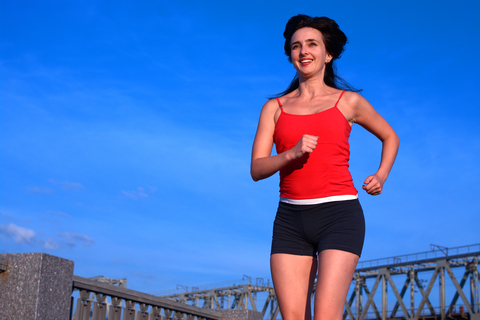
Aerobic exercise also makes your body produce endorphins. These are your body’s natural pain relievers, and they work much the same way many prescription pain meds do. They bind to the opioid receptors in your brain, which blocks the perception of pain.
No need to go all-out with the cardio, though — that’s counterproductive. Just choose something light and easy. The key is to just move enough to get those endorphins going.
Muscle imbalances are the #1 cause of pelvic and lower back pain
Never heard of muscle imbalances? I’m not surprised… most people haven’t.
To put it simply, a muscle imbalance occurs when you have overdeveloped and tight muscles in one area of your body while the opposing muscles are weak and stretched out of their normal position.
These imbalances can happen anywhere on your body and often develop as the result of the routine things you do while on the job, playing sports, or engaging in other activities you enjoy.
But when you have pelvic pain along with lower back pain, I find it’s often caused by muscle strains and tension (This is true for both women and men, by the way). Muscle strains and tension can be caused by a lack of flexibility and proper alignment.
Learn more about muscle imbalances in this video:
When you’re active — especially when you’re doing activities that involve pulling, pushing, lifting or throwing — if your muscles don’t adequately support the areas of your body that you’re using, you may notice soreness, discomfort and pain.
That’s your body’s way of letting you know that you’ve overexerted yourself.
If you go to a doctor for a muscle strain, he or she will likely tell you take an over-the-counter pain reliever.
I don’t ever recommend pain pills as a first line of treatment. First of all, every single pain pill on the market has been linked to scary and serious side effects. Some of them are life-threatening!
And that includes both common over-the-counter remedies such as ibuprofen (Motrin, Advil) and acetaminophen (Tylenol, as well as the prescription kind.
Drugs don’t fix the problem. They only mask the symptoms.
Researchc shows there are other, natural ways to ease the pain.
4 simple steps to ease women’s lower back and pelvic pain
1. Try a natural pain reliever
Mother Nature has a long list of inflammation-crushers and natural pain relievers. There are so many great ones that it’s impossible to say just one is the best
But today, I’ll tell you about one called Devil’s Claw…
Numerous studies have proven its effectiveness in reducing pain and inflammation.
In fact, one study found that Devil’s Claw was more effective in treating arthritis pain as the common drug phenylbutazone, a drug so strong it’s even used to treat pain in horses! [ii]
Another study showed that Devil’s Claw worked as well as Vioxx to treat back pain. [iii] (If you recall, the FDA yanked Vioxx from the market in 2004 because it increased the risk of heart problems.)
Boswellia is another herb that has been widely used for centuries to reduce pain and inflammation.
It’s used in a number of natural pain-relieving products because it is believed to be a safe and natural way to reduce pain.
2. Take it easy
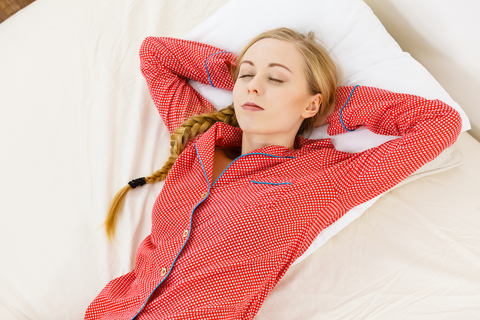
Do what you can to cause the least amount of stress on your pelvis and back as possible. Avoid heavy lifting and other strenuous activities until the pain subsides.
Rest if you’d like, though bed rest isn’t required. It’s perfectly fine — even advisable — to continue your daily routine.
Meditation has proven health benefits, including reduction of depression and inflammation.
Hypnosis also has powerful benefits. Various techniques have been proven to help pain sufferers manage and cope with their pain and stress levels. You can learn more about hypnosis here.
Let your body be your guide. Pay attention to how you feel. If you find a particular activity increases your pain or discomfort, stop what you’re doing and allow your body to relax and recover.
3. Get a massage
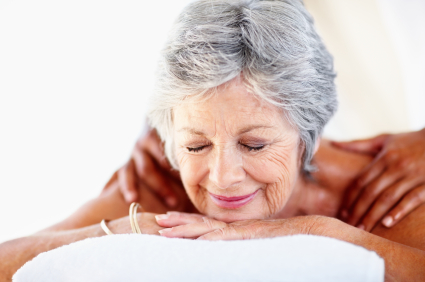
Massages can help ease the tension in your lower back, which in turn can ease the stress in your pelvis.
The two main muscles you want your massage therapist to address if you have lower back pain are your quadratus lumborum (or QL, for short) and your gluteus medius.
Your QL connects your last rib to your pelvis. It’s the deepest abdominal muscle. If it’s strained it can cause serious back pain, because it’s the main muscle you use to sit, stand and walk.
Your gluteus medius is a posterior hip muscle. If your QL is irritated, strained or injured, your gluteus medius tries to pick up some of the slack.
When this happens, it’s very easy for your gluteus medius to get inflamed, too.
4. Practice yoga
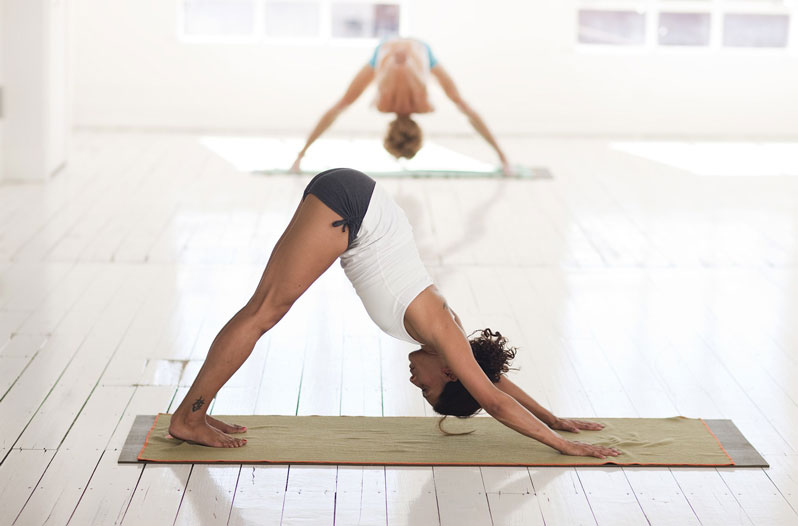
This ancient art has incredible health benefits. It makes you more flexible, strengthens your back muscles and improves circulation.
Yoga also helps return your spine back to proper alignment.
But does it help with the pain? Yes, and in a big way…
A review of 10 randomized controlled trials that included nearly 1,000 patients with chronic low-back pain found strong evidence for yoga’s long-term effect on pain. [iv]
And it works fast. An article published in the Annals of Internal Medicine found significant improvement after just one 12-week yoga program.[v]
Yoga’s pain-relieving power goes deeper than that…
You see, chronic pain can actually change your brain’s anatomy. It reduces the amount of your brain’s gray matter. Yoga can stop this process in its tracks — even reverse it.
In fact, one study found that yoga had the exact opposite effect on the brain that chronic pain had.[vi]
Read more:
This breakthrough system can relieve chronic pain in 30 days
Lower Left Back Pain: Symptoms, Causes and Treatments
17 Muscles That Cause the Most Back Pain (and how to get relief!)
Can Constipation Cause Back Pain?
References:
i Abbaspour, Z., MSc. “The Effect of Exercise on Primary Dysmenorrhea,” J Res Health Sci, Vol 6, No 1, pp. 26-31, 2006.
ii Gagnier JJ, Chrubasik S, Manheimer E. “Harpagophytum procumbens for osteoarthritis and low back pain: a systematic review.” BMC Complementary and Alternative Medicine 2004; 4:13
iii Chrubasik, S., et al. “A randomized double‐blind pilot study comparing Doloteffin® and Vioxx® in the treatment of low back pain.” Rheumatology 42.1 (2003): 141-148.
iv Holger Cramer, Romy Lauche, Heidemarie Haller, Gustav Dobos. “A Systematic Review and Meta-analysis of Yoga for Low Back Pain.” Clin J Pain. 2013 May;29(5):450-60.
v Saper RB, Lemaster C, Delitto A, Sherman KJ, Herman PM, Sadikova E, et al. Yoga, “Physical Therapy, or Education for Chronic Low Back Pain: A Randomized Noninferiority Trial.” Ann Intern Med. ;167:85–94. doi: 10.7326/M16-2579
vi American Pain Society. “Yoga and chronic pain have opposite effects on brain gray matter.” ScienceDaily. (www.sciencedaily.com) May 15, 2015.

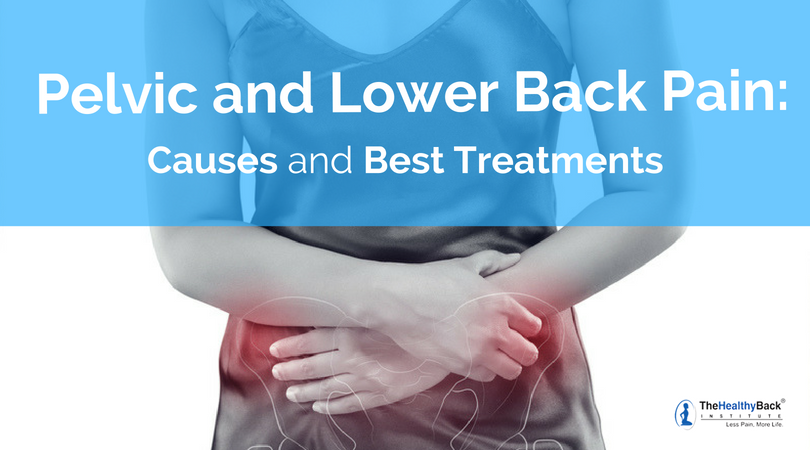



hey i think, Using TENS unit will also gives you a temporary pain relief
Hey Nick,
Thanks for the comment. Yes, TENS helps some people. I’d recommend investigating an even lower current alternative we’ve covered before called Frequency Specific Microcurrent. You can learn more about that on this post:
http://losethebackpain.com/frequency-specific-microcurrent/
Best wishes,
Steve Coombes
Hi Steve and Jesse,
I agree with Nick in his suggestion about using a TENS machine. I’ve had two cortisone epidurals, multiple drugs and lots of exercises and physio sessions because of my lower back disc protrusion, but my $30 TENS machine that I bought on eBay has certainly provided much relief for my back pain. Massage has helped too, as has chocolate ice cream…..
Thanks,
Matthew
Hi steve thanks for the article,and i’ll suggest my friend to also ahve tha TENS machine.
Thanks Jesse for sharing a few tips on back pain. Women do feel back pain especially when they exercise or during pregnancy. Back massages may help women to reduce the back pain. Medications can beat the pain, but it’s not an everyday remedy. Every woman should embrace a good routine to keep a healthy back.
Bowen therapy is a powerful cure for back pain, works like magic,
Back pain is the number one cause of wheel chair disability who wants to be in one. I am going to do more yoga and hope that I rid myself of any type of back pains.
Hi Elizabeth,
Thank you for your comment. In addition you may also find it useful to get yourself a copy of our book the “7 Day Back Pain Cure”.
The book discusses back pain issues, muscle imbalances, sciatica and related pains, various treatment options you can consider, pain relief suggestions, action plans and other helpful information for when dealing with pain.
Please read more details and information about the 7 Day Back Pain Cure book via the link below
https://losethebackpain.com/products/7-day-back-pain-cure-book
Our Best Wishes
Admin (The Healthy Back Institute)